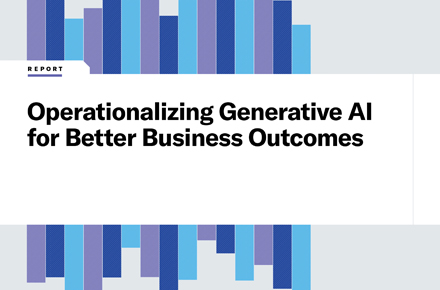How collaboration platform data can help optimize your hybrid work model
Januar 5, 2023 / Alan Shen
Short on time? Read the key takeaways:
- With the shift to hybrid work, successful companies are upgrading their unified communications and collaboration (UCC) technology to attract and retain talent.
- UCC monitoring tools help IT teams dig beneath the surface of their employees' communication and collaboration environments to deliver a positive and more consistent end-user experience across locations.
- IT teams can improve the employee experience by correlating the endpoint telemetry data collected by UCC monitoring tools with data from multiple dimensions.
- Companies can empower their end-users by looking beyond the technology itself and focusing on their experience.
At the beginning of the COVID-19 pandemic, enterprises were scrambling for a number of reasons.
High on the priority list was figuring out how to quickly install and scale unified communication and collaboration (UCC) platforms like Microsoft Teams and Zoom to enable remote work. End-user expectations and the bar measuring success were relatively low. If calls sounded muffled or the video connection was spotty, employees understood the world was in a once-in-a-century scenario.
Some workplaces have since returned to an in-office model, while others have fully adopted remote work. But the vast majority are embracing a combination of the two to create hybrid work environments. As the world continues to navigate the new digital workplace highway, UCC platforms are certainly not going away. In fact, post-pandemic work life has changed employee experience expectations across the board, and enterprises must level up to attract and retain talent. This is especially important as baby boomers retire and companies compete for a much smaller Gen-Z worker base.
To improve the employee experience, organizations are turning to UCC monitoring tools to dig beneath the surface of their employees' communication and collaboration environments. This begs the question:
How can data from UCC platforms be used to optimize a hybrid workplace?
This article highlights key insights derived from UCC monitoring tools, revealing how organizations can act upon that information to deliver an enhanced employee experience — regardless of worker location.
The fundamental link between UCC and experience parity
We’ve all endured the derailment of a remote or hybrid meeting due to just one person’s audio or video quality issues. Whether the problem is caused by the user’s network connectivity, a faulty meeting room device or something else altogether, all participants have a poor experience, ultimately impacting productivity. But let’s be frank: those issues existed pre-pandemic. The new challenge facing enterprises is the paradigm shift to hybrid work, an environment in which remote participants are now first-class users. Will these remote employees feel left behind as their colleagues return to the office? Will the return-to-office workers think they’ve wasted commute time if they’re still in Zoom meetings all day?
Under the proverbial hood of UCC platforms, a ton of data is generated that, when applied, can help build experience parity — meaning all employees’ work experiences are consistent, regardless of location — in the hybrid workplace. Forward-thinking enterprises have embraced workplace analytics solutions and paired them with telemetry data collected from endpoints to correlate data from multiple dimensions and improve the experience of their hybrid workforce. This approach is particularly important to bridge the generational divide, with senior management favoring on-site working and Gen-Z preferring remote and hybrid work models.
The question now becomes, how can enterprises act upon those insights to improve the employee experience for all?
Learn more about collaboration data in episode 30 of the DWS Deep Dive podcast.
How a global enterprise improved the regional collaboration experience
Now more than ever, IT teams are being held responsible for improving the remote employee experience. But IT often has little visibility into negative external factors, such as internet service provider (ISP) performance.
UCC data can help shed light on whether ISP performance is impacting the remote end-user experience. For example, evaluating anonymized UCC data from several end-user groups can reveal systemic patterns at the ISP and the software as a service (SaaS)-provider levels. By taking advantage of UCC monitoring tools, IT teams are empowered to isolate the root cause of an issue and improve the hybrid employee experience.
Here’s an example of how a global enterprise tapped into its UCC data to create experience parity among its dispersed workforce. The company’s employees are spread across dozens of cities in five countries. One team is in a rural region of southern Africa where its employees were experiencing problems with Microsoft Teams. Analyzing a wider set of UCC data from other tenants, Unisys’ analytics solution identified the issue as a regional phenomenon—other southern African employees were experiencing the same problem. To work around the issue, we steered the employees in this region to switch to Zoom for their communication and collaboration needs temporarily.
This example highlights the importance of shifting from a technology focus to an experience focus. A technology focus would have led to hours investigating and troubleshooting the UCC problems in this region. By focusing on experience, we looked past the technology and empowered the end-users to resume their business activities.
The power of multi-dimensional analytics
The example above is compelling because it resolved the issues of a user base by analyzing the data from a totally different set of end users. An expansion of that approach is to correlate data from multiple, seemingly disparate data sources to provide a clearer picture of how to improve the employee experience. For instance, pairing application-layer telemetry with device telemetry can be a powerful combination. This is especially true with UCC experience, where real-time scenarios are more highly sensitive to slight variations in endpoint performance.
For instance, the Digital Workplace Solutions team at Unisys has performed extensive experimentation, correlating endpoint telemetry with customers’ Microsoft Teams call records. Applying a range of AI/ML algorithms uncovered several interesting findings. For instance, we discovered laptops running at higher CPU usage resulted in a disproportionate percentage of poor audio and video calls. This ostensibly logical connection is often missed at most enterprises, whose IT teams tend to focus on the network as the main culprit of UCC issues. By correlating multiple data sources, Unisys was able to calculate the precise degradation threshold. In other words, the team identified the minimum CPU load – the amount of work performed by the CPU as a percentage of total capacity— that can result in a poor end-user collaboration experience. Remediation activities are now underway with multiple organizations to improve their end-user experience and even steer future PC refresh decisions at the leadership level.
Harnessing the power of UCC data
UCC monitoring tools provide data that can pinpoint where communication and collaboration problems originate, helping enterprises make intelligent decisions to resolve poor end-user experiences. As the hybrid era of work continues to evolve, a proactive approach to UCC monitoring, measurement and issue resolution remains key to ensuring experience parity among all users, regardless of location.
Explore how Unisys can help empower your hybrid workforce by designing smarter, innovative workspaces that create seamless and secure digital experiences.




















